Advertisement
Picturing The Olympics: A History Of The Games In 15 Posters
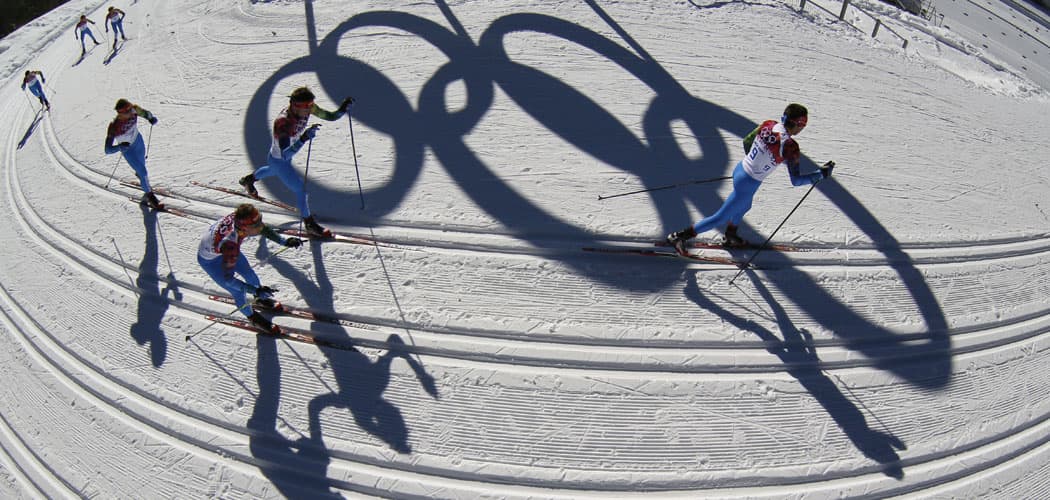
The spectacle of the winter Olympics at Sochi, Russia, getting underway this week (above) combined with protests against Russia’s anti-gay laws are reminders that the competitions always blend a celebration of athletics with the politics of “We Are the World” internationalism and self-promoting nationalism.
“Basically, you’ve got to look at the history of travel. The Olympics movement was a huge, huge event. It was an opportunity for a country to say they’re ready,” says Jim Lapides, owner of International Poster Gallery in Boston. “It’s all about becoming a leading member of the world community.”
Below is a selection of a century of Olympics posters from the inventory and archives of the Newbury Street gallery that illuminate changing tastes (from illustration to graphics and photography) and politics (war and peace).
1912: Stockholm
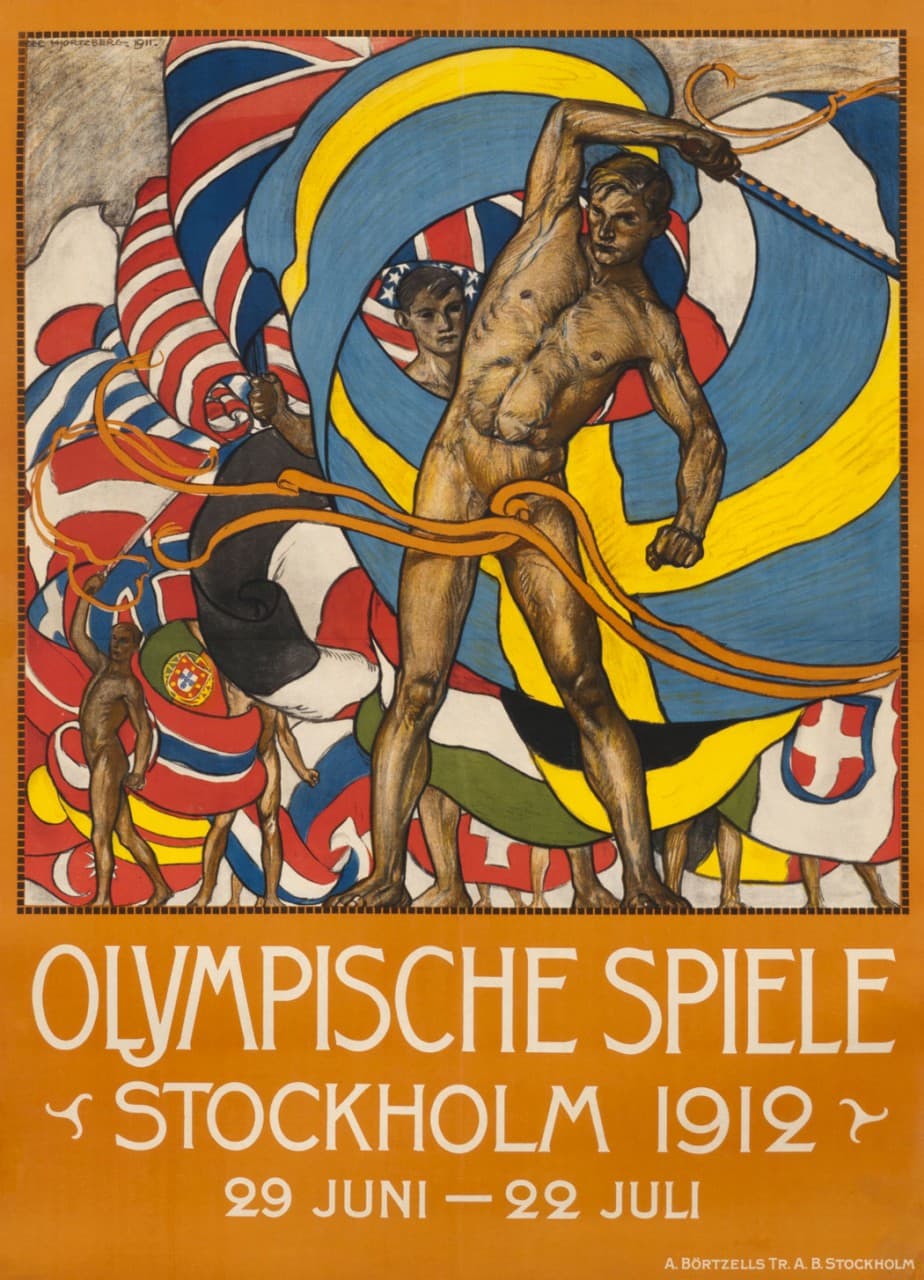
The modern international Olympics were relaunched with competitions at Athens, Greece, in 1896, and then the debut of a separate winter Olympics beginning at Chamonix, France, in 1924. Gustaf Hjortzberg, a Swedish painter and designer who painted several church altarpieces, designed this poster for the fifth official international Olympics in 1912. On the eve of World War I, it champions international harmony with a parade of nude athletes from participating nations waving flags and streamers.
1936: Garmisch-Partenkirchen, Germany
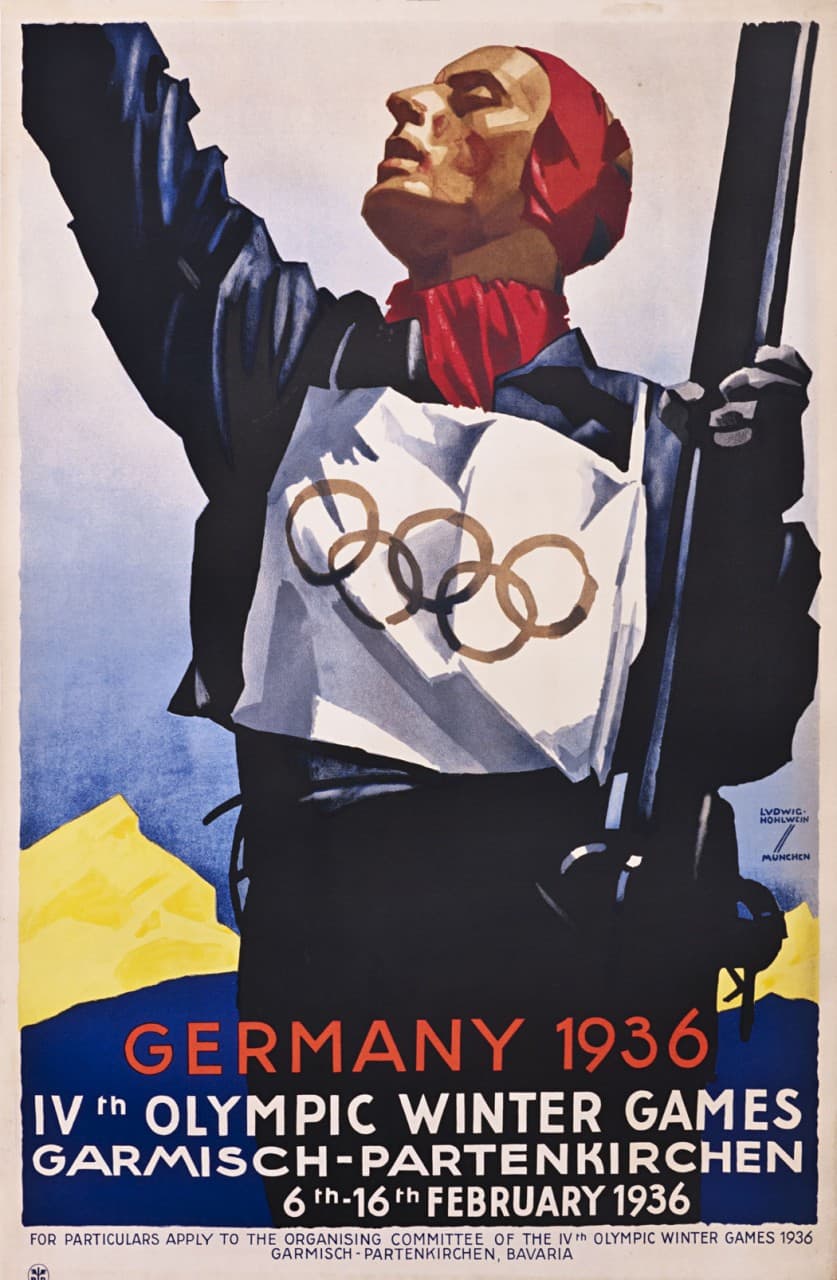
The 1936 games were the infamous Nazi-hosted Olympics. To advertise the winter games at Garmisch-Partenkirchen that February, they turned to Ludwig Hohlwein, a German designer of advertising graphics, including coffee, cotton, and Toblerone chocolates. He was the leading proponent of a German "reaction against Art Nouveau that was dubbed the Plakatstil, the German form of early modernism. It along with the innovations of the Vienna Seccession and the Wiener Werkstatte were the most visible indications of a shift to functionalism and the modern trend away from illustration to graphic design," Lapides says.
“You’d have to consider him the most important German poster artist of all time,” Lapides adds. But Hohlwein’s design is “a propaganda poster as much as a sports poster, and a frightening one. ... Guised with this big broad open stance and smile, you have the Nazi salute.”
1936: Berlin

Franz Wurbel, a Berlin painter and graphic artist, won the poster design contest for the summer games hosted in August 1936 in Nazi Berlin. His design showcases Nazi notions of Aryan racial superiority and their connections to ancient Rome. A strapping golden man is crowned with a green victory wreath. The foreground features the silhouette of the landmark 18th century Brandenburg Gate in Berlin topped by a statue of four-horses pulling a chariot driven by a Roman victory goddess.
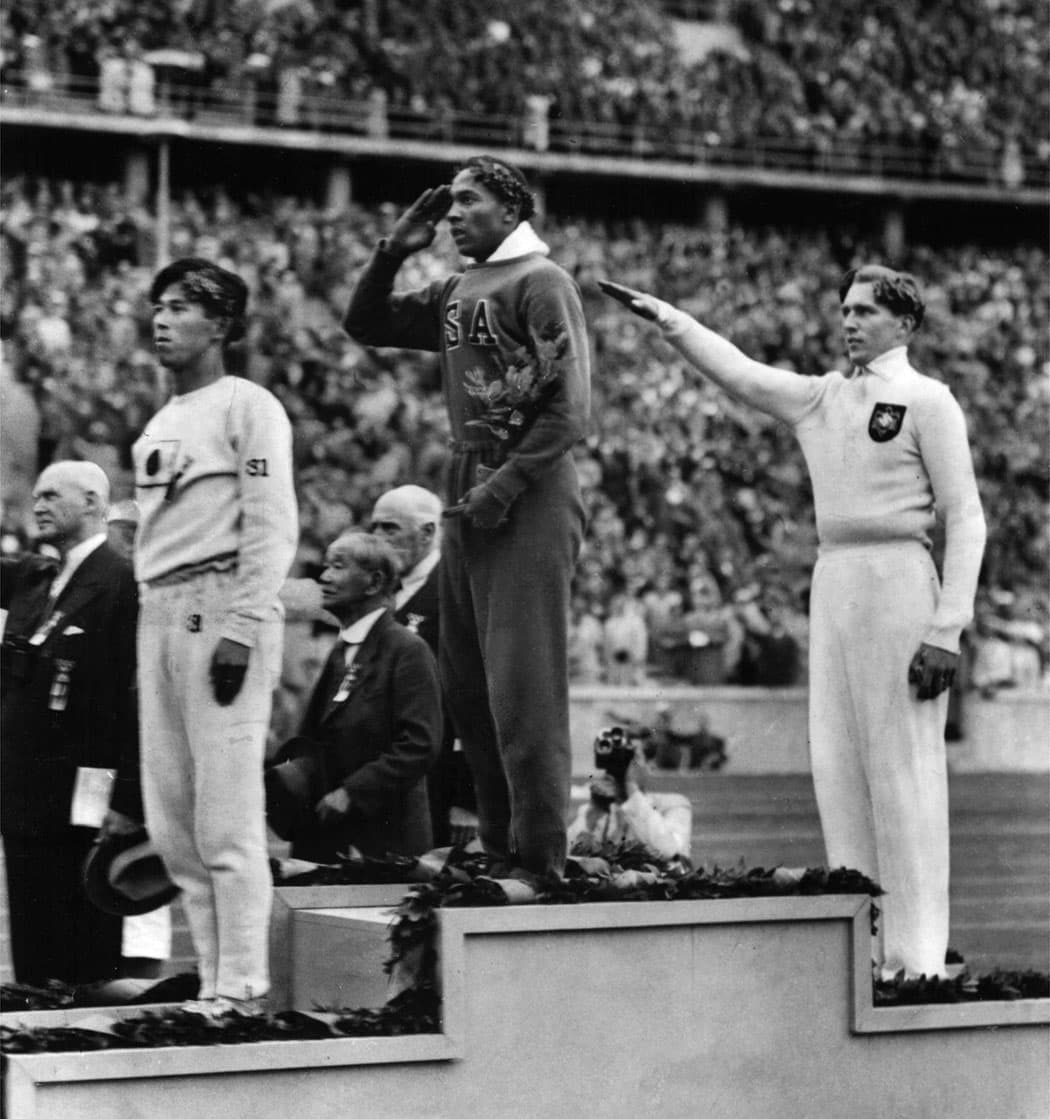
In the United States, the 1936 summer games are best remembered for African American track star Jesse Owens’s four gold medals, but Germany lead all nations with the most golds as well as the most medals overall.
1948: London

The 1948 games marked a revival of the Olympics after they were canceled in 1940 and ’44 because of World War II. London, which had been chosen to host the 1944 games, hosted this year instead. Walter Herz, a Jew who had fled from Czechoslovakia to London in 1939, the year Nazi Germany occupied his native country, designed the graphics for the so-called “Austerity Games,” nicknamed for the strict austerity of Britain’s postwar economy. The iconic 5th century BC Roman marble statue of a discus thrower, from the collection of the British Museum in London, symbolically connects London to the ancient games. In the background, the London Houses of Parliament and the Big Ben clock tower, which survived World War II despite German bombing, symbolize the persistence of democracy under totalitarian threats.
1960: Rome

For the 27th summer Olympics at Rome, Italy, Italian advertising designer Armando Testa turned to the iconic, ancient image of a she-wolf feeding the infant Romulus and Remus, the legendary founders of Rome.
1964: Tokyo
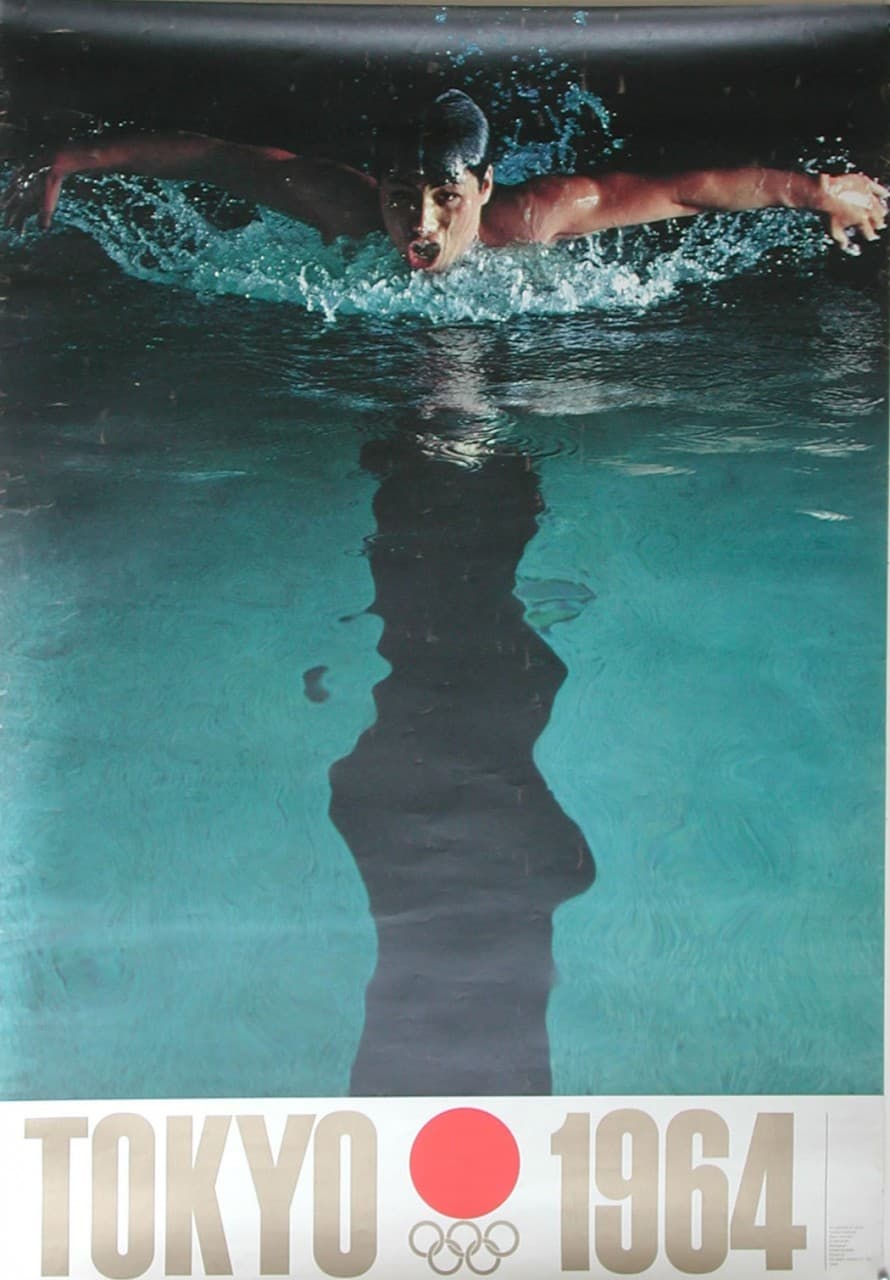
Japanese designer Yusaku Kamekura is revered for his graphics for the 1964 summer Olympics in Tokyo that blend heart-pounding action photography, Modernist design and a traditional, spare Japanese elegance. “They’re stunning use of photography and design, just classics of good design,” Lapides says. “They captured motion. They’re great photographs in their own right, but the way they’re designed make them more.”
1968: Mexico City

American graphic designer Lance Wyman took inspiration from historic native Huichol designs as well as the vibrating patterns of ‘60s Op Art to create this striking motif for the 1968 games.
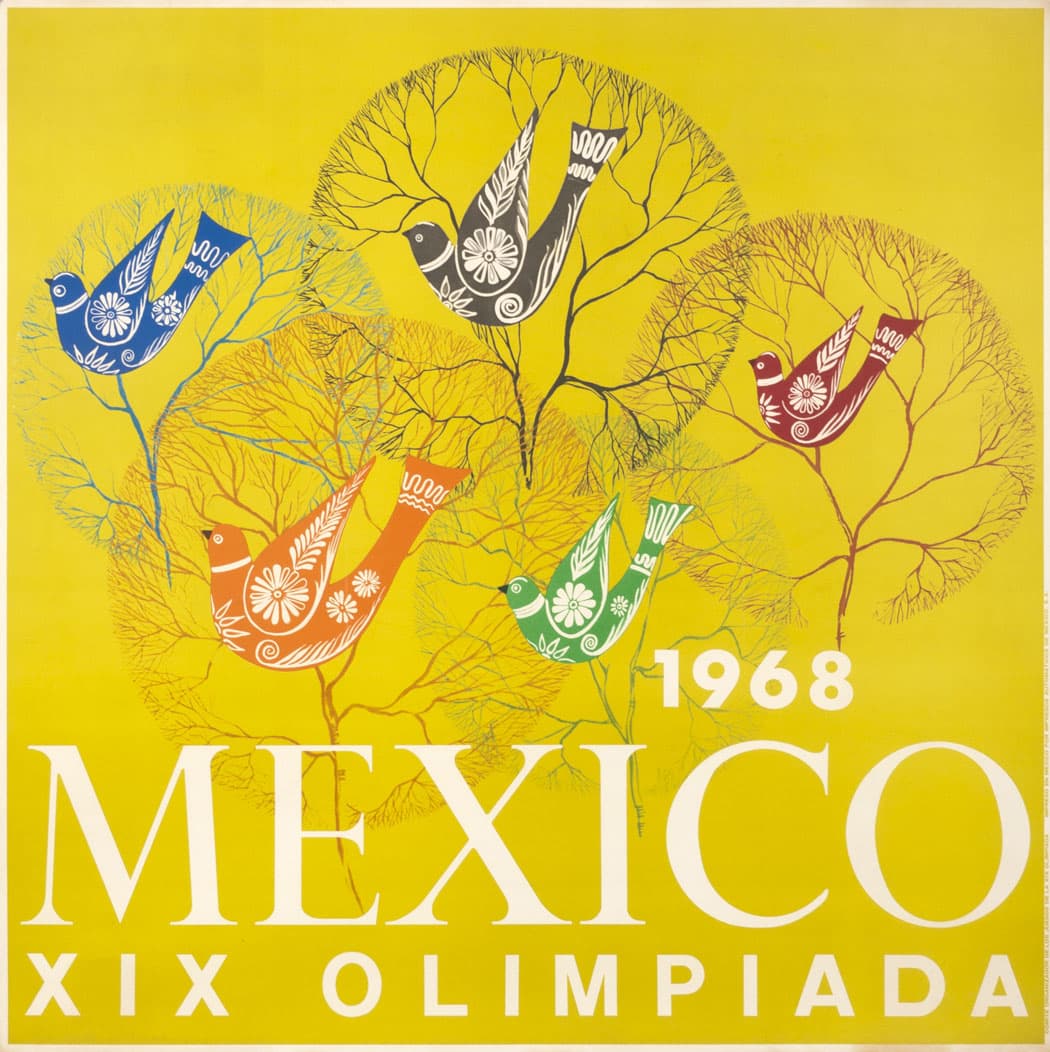
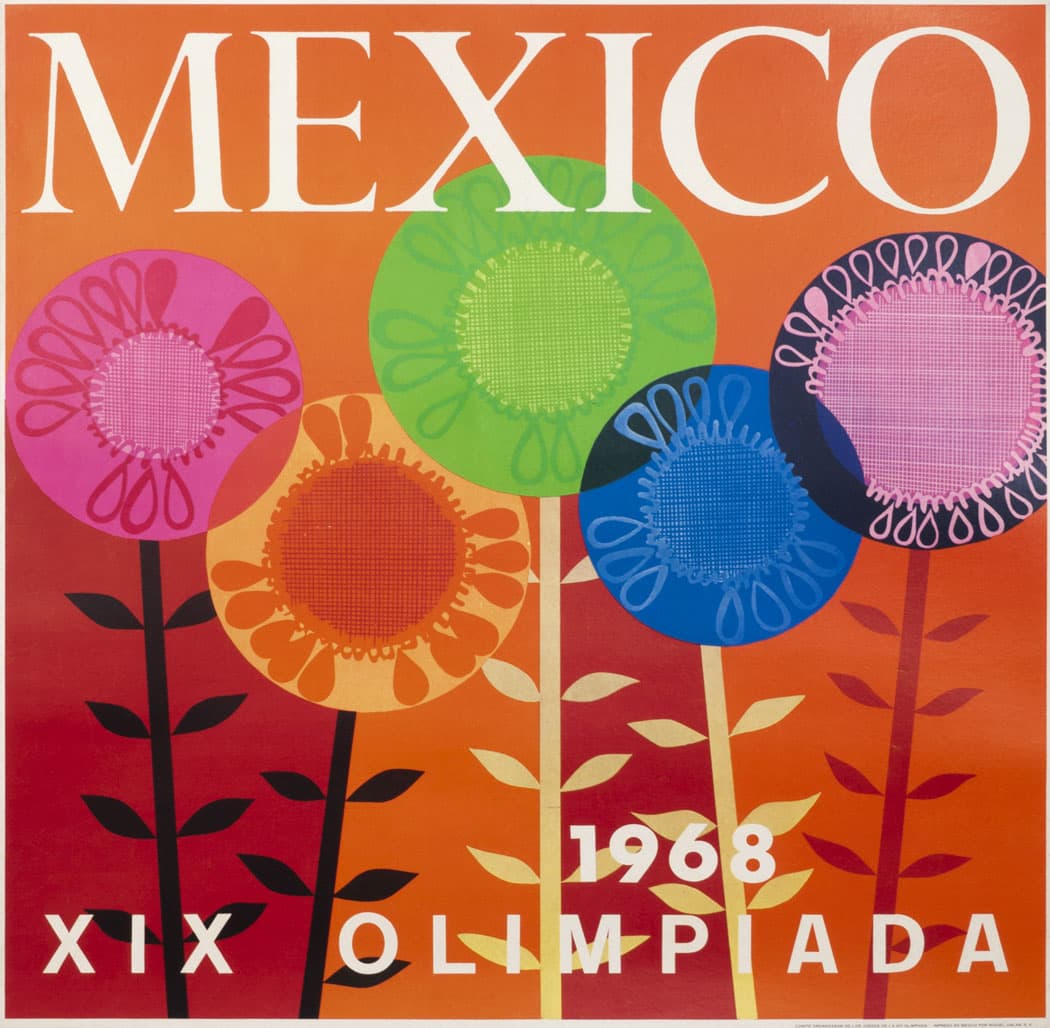
The 1968 sunny graphics—coincidentally or not—echo Mary Blair’s designs for Disney’s “It’s a Small World” ride, a Cold War call for international harmony that debuted at the United Nations Children's Fund pavilion at 1964 New York World’s Fair and moved to Disneyland in California two years later. (Of course, Blair’s whole style was inspired by travels in Latin America in the 1940s.) The cheery images are in contrast to the fact that 1968 was a year of war and civil unrest around the globe. Just 10 days before the start of the games that October, Mexican soldiers opened fire on a crowd of protestors in Mexico City, killing dozens.

In the United States, we remember African-American sprinters Tommie Smith, who took gold in the 200 meter race with a world-record time of 19.83 seconds, and John Carlos, who came in third, raising black-gloved fists in the Black Power salute for civil rights at their medal ceremony.
1972: Munich
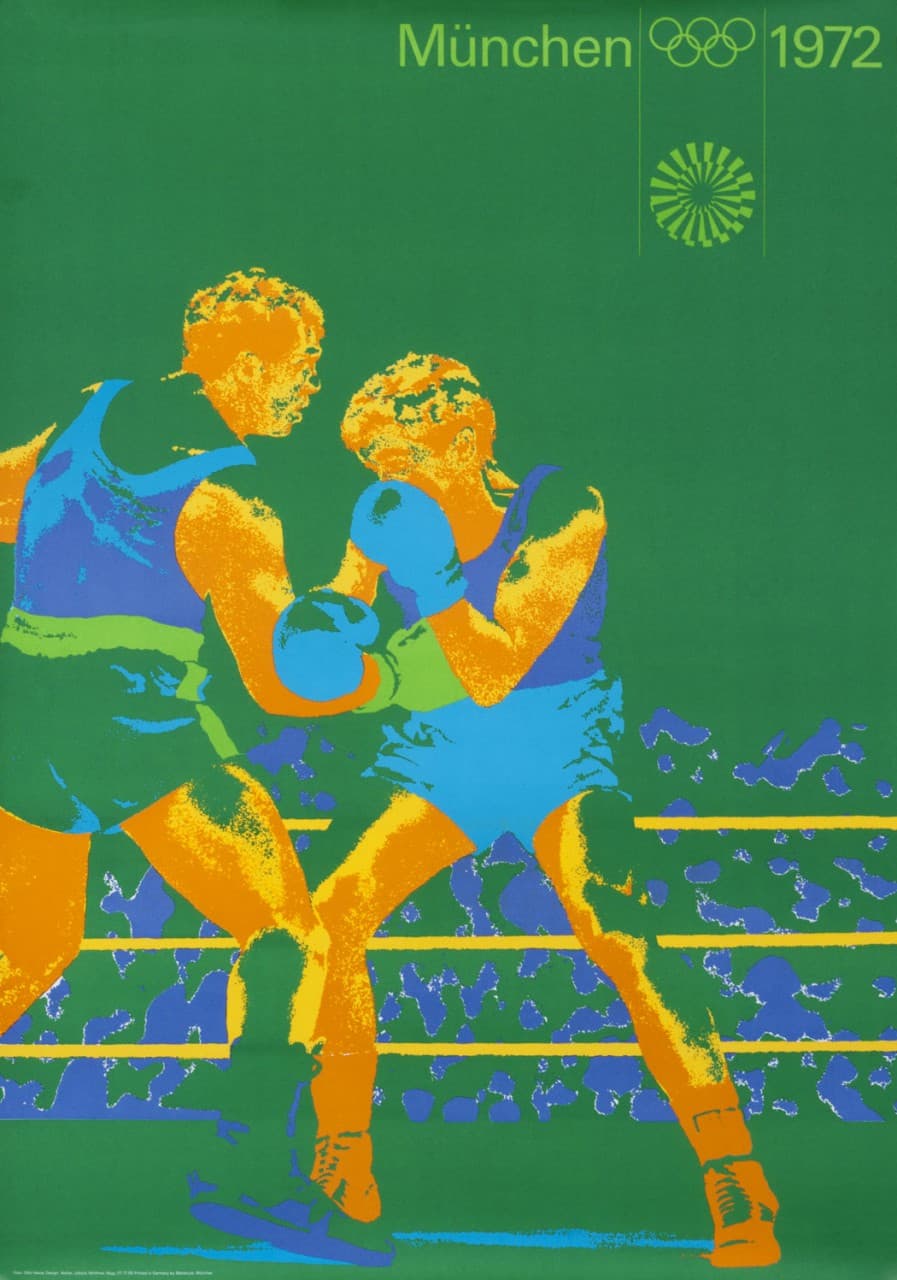
Otl Aicher, the lead designer for the games, developed the spiral striped sun logo on this poster as well as stick-figure pictograms for the Olympic locations to communicate visually to visiting athletes who spoke dozens of different languages. These symbols influenced public signs in the United States and then around the world. “That series is a classic of international typographic design. It represents the ultimate distillation of graphic design into its basic elements,” Lapides says. “It was all clear, rational, logical. … It was the last bloom of that style before post-modernism.” The sunny logo was also meant to symbolize the peaceful turn of West Germany since World War II, but the games were shattered by the murder of 11 Israeli athletes and coaches by Palestinian Black September terrorists.

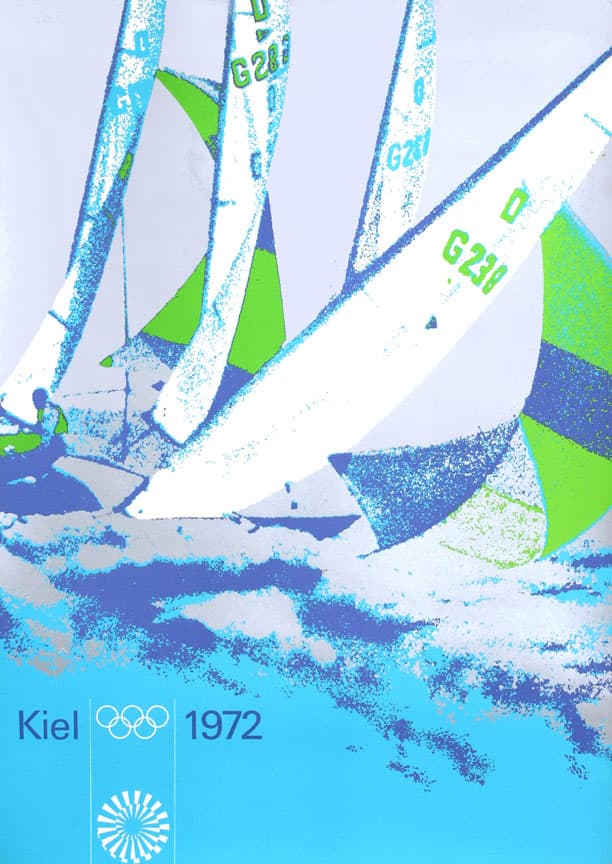
Peter Cornelius’s poster for the 1972 Munich Olympic competitions at Kiel, where water skiing and sailing events were held.
1972: Sapporo
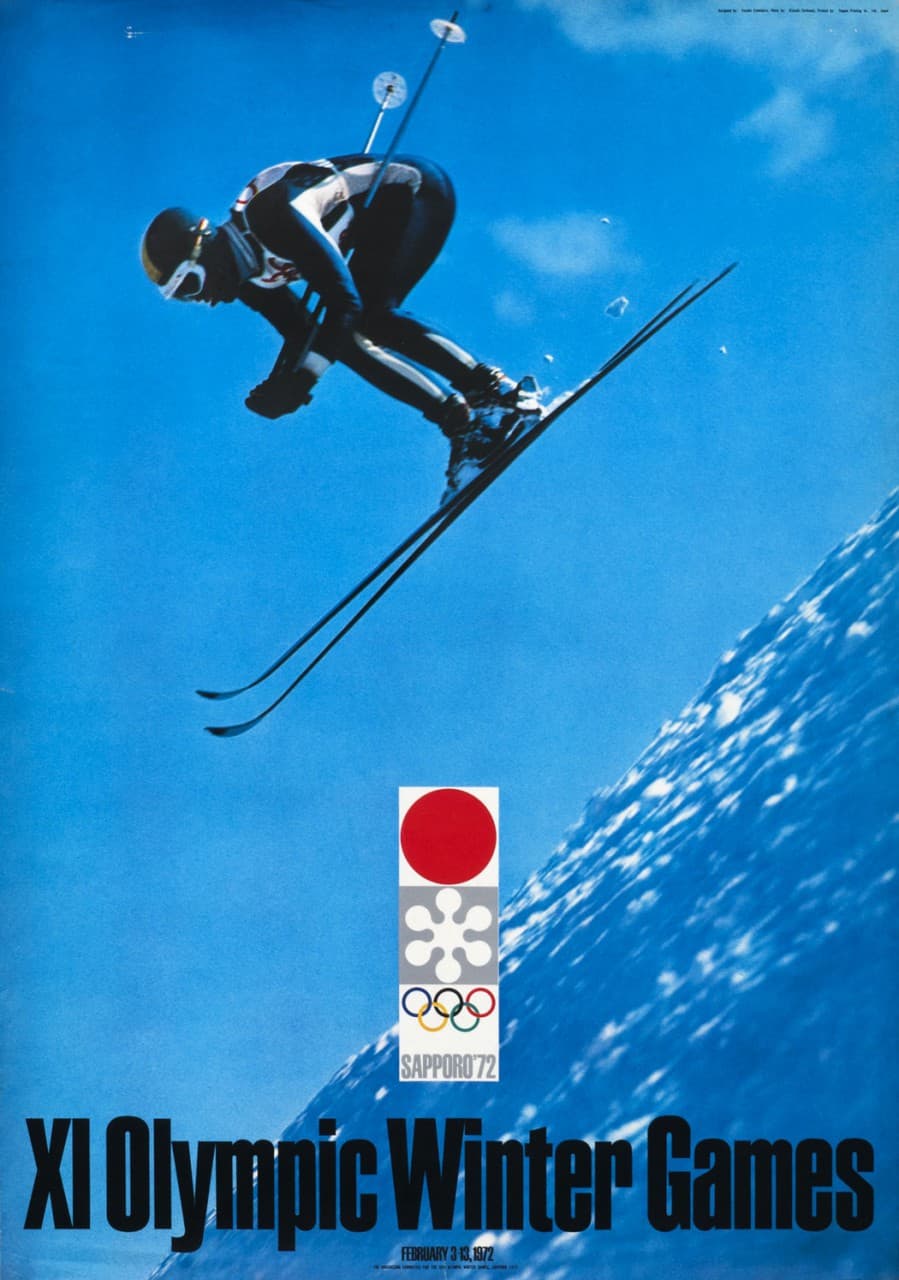
Yusaku Kamekura, who’d had such success with his posters for the ’64 Tokyo games, returned with this dashing skiing poster based on a photo by Kiyoshi Fujikawa.
1988: Seoul

Hyun Kim developed the minimal graphics that describe a fan dance on this poster.
1992: Barcelona
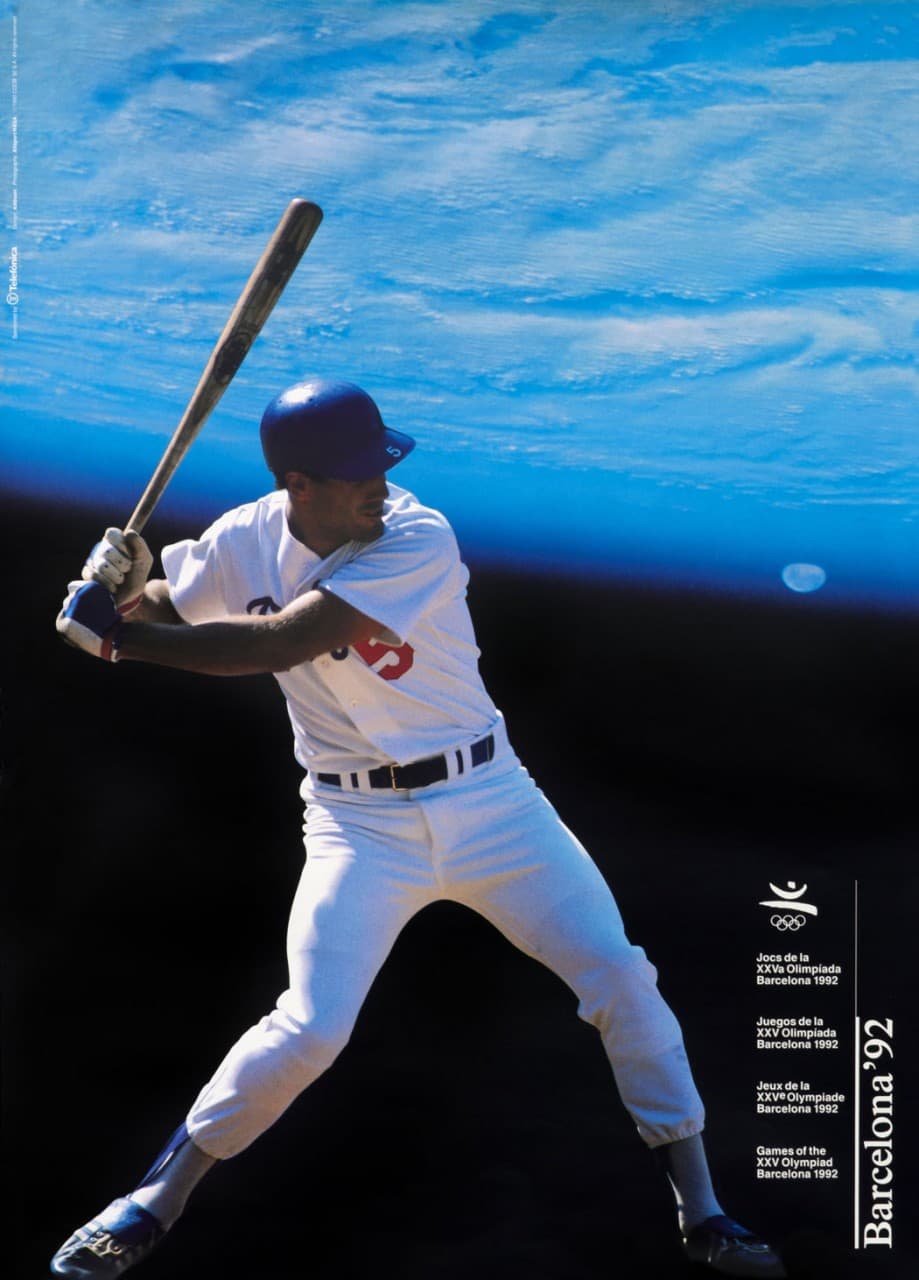
Addison came up with a dramatic series of posters featuring athletes and the earth. The planet becomes a mat for a boxer, a table for a ping-pong player, and the goal for a soccer player floating in the black void of space.
Greg Cook is co-founder of WBUR’s ARTery. Follow him on Twitter @AestheticResear.
This article was originally published on February 06, 2014.
